Taking care of horses can be challenging, and while our equine companions can be amazingly athletic they can also be extremely accident and injury prone. As we learn to care for them more adequately, it’s our job to understand leg care and make sure that depending on the disciplines we practice and the things we are asking our horses to do, we provide the necessary care for their bodies.
Today, let’s chat about leg protection. One of a horse’s most important yet accident-prone parts is its legs. They are so big and strong yet certain areas can be extremely susceptible to injury.
Basic equine leg anatomy
To get started, let’s familiarize ourselves with the general anatomy of a horse’s legs:
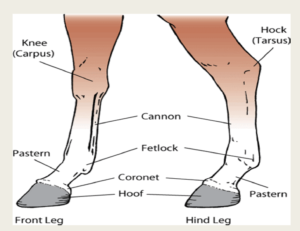
Cannon/splint bone and fetlock protection
Inside the inner wall of the cannon bone is a small bone called the splint bone. This bone can be prone to bruising or other forms of injury because of its location. When a horse has to move in a way where one foot is crossing over the other, the cannon and splint bones when left exposed can hit one another and become irritated, sometimes causing lameness issues.
To avoid these injuries, use splint or combination support boots like the ones pictured below:
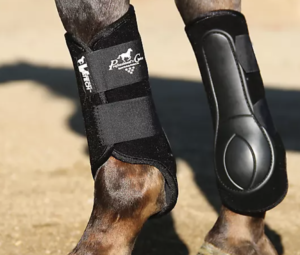
Over Reach Boots (Bell boots)
Over reaching is an injury caused when the hind feet “over reach” in a given stride, causing the horse’s back feet to step on the backside of it front feet. The areas prone to injury here are the back and side of the pastern and coronary band. To protect from this kind of injury use Overreach or “bell” boots to protect your horse’s front feet like the ones seen below:
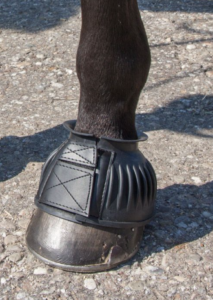
Skid Boots
One other form of common leg protection mostly used in the western disciplines is skid boots. Skid boots are used to protect the bottoms of the hind fetlocks from skidding on the ground when doing a sliding stop which necessitates the horse balancing on its hind end while lowering it closer to the ground. Skid boots come in a variety of shapes and sizes and can range from a minimal leather and rubber version to full combination boots that are made of neoprene.
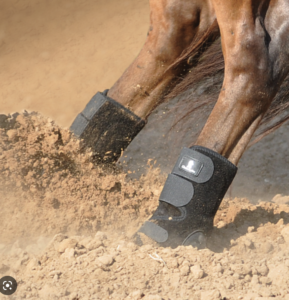
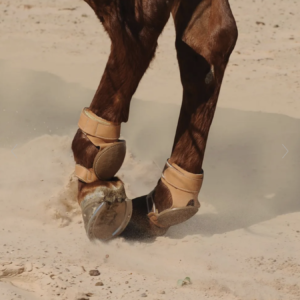
How to know what you really need
All in all, choosing the right leg protection for your horse is really about knowing your horse, your discipline, and what is necessary for your situation. For instance, if you’re just going to walk and trot your horse down trails, it may not be necessary to provide protection for your horse because the activity doesn’t demand a lot of complicated maneuvers. But on the other hand, if you are teaching your horse to spin, side pass, and do canter departures, you may want to find some protective boots that are appropriate for your discipline and budget.
Source photos:
Classic Equine
Professional’s Choice
Pro Equine Support Boots
Valley Vet Supply




